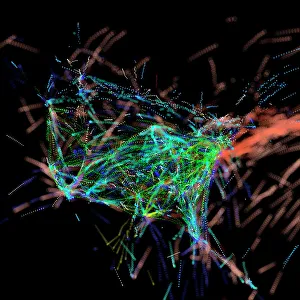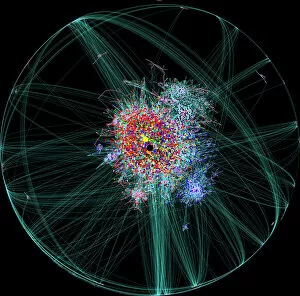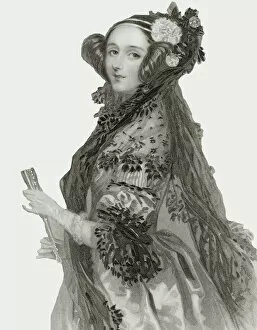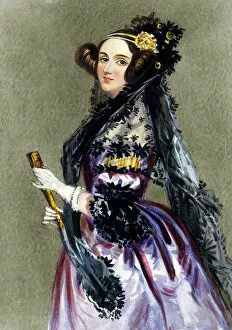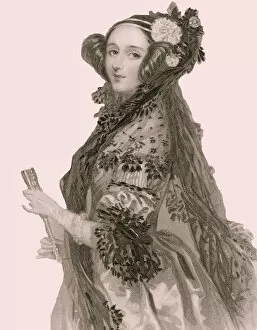Algorithms Collection
Algorithms, the invisible architects of our digital world, hold the power to transform chaos into order
For sale as Licensed Images
Choose your image, Select your licence and Download the media
Algorithms, the invisible architects of our digital world, hold the power to transform chaos into order. Just like the intricate air traffic visualisation that ensures safe journeys in the sky or the mesmerizing internet blog map that connects millions of voices worldwide, they can at work behind these marvels. In their essence, they can not a recent invention but have been shaping human progress for centuries. Take Augusta Ada King, Countess of Lovelace, whose portrait captures her brilliance as she delved into mathematical concepts and envisioned algorithmic possibilities long before computers existed. Her pioneering work with Charles Babbage on his Analytical Engine laid the foundation for modern computing and earned her recognition as the first computer programmer. From Pythagoras using his counting table to compete against Boethius in ancient times to today's website source code visualisations revealing complex networks within cyberspace, they have evolved alongside humanity's thirst for knowledge and innovation. They enable us to navigate through vast amounts of information effortlessly and make sense of it all. Just like an ecological food web where every organism relies on others for survival, algorithms interconnect various aspects of our lives seamlessly. They optimize search engines to provide relevant results amidst an ocean of data or enhance social media platforms by curating personalized content tailored to individual preferences. Yet despite their omnipresence in our daily routines, algorithms remain enigmatic entities hidden beneath layers of code. Their true potential lies not only in streamlining processes but also in raising ethical questions about privacy invasion or biased decision-making. As we continue down this path driven by technology's rapid advancement, understanding algorithms becomes crucial. By demystifying their inner workings and ensuring transparency, we can harness their power responsibly while safeguarding fundamental values such as fairness and inclusivity. So let us embrace these silent orchestrators with curiosity and caution alike – appreciating how they shape our world from air traffic control rooms high above us to vibrant internet blog maps connecting minds across borders.

